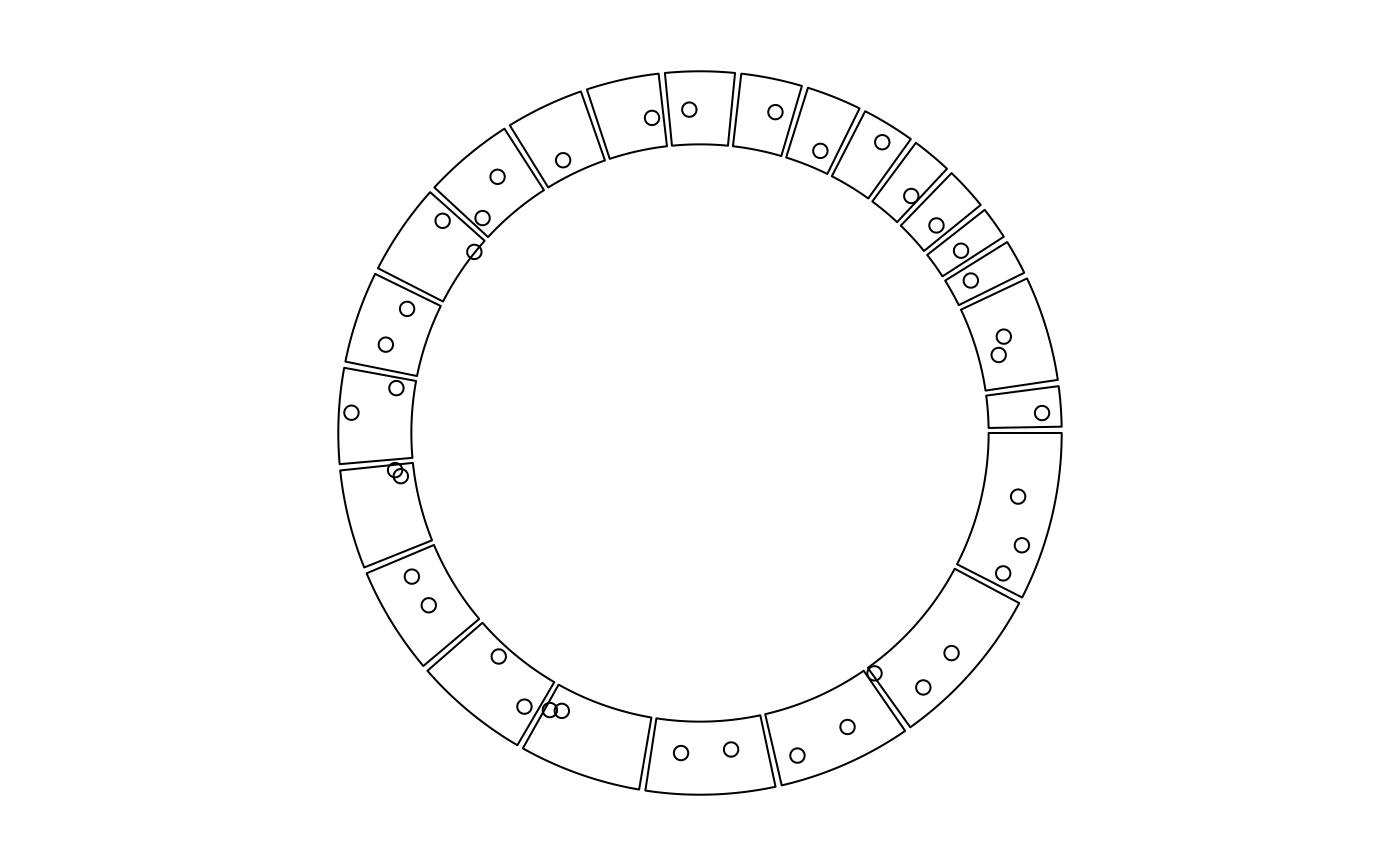Object ccGenomicCellGeom will call the function circlize::circos.genomicPoints while drawing.
Arguments
- region
A data frame contains 2 columns which correspond to start positions and end positions.
- value
A data frame contains values and other information.
- numeric.column
Which column in
valuedata frame should be taken as y-value. If it is not defined, the whole numeric columns invaluewill be taken.- posTransform
Self-defined function to transform genomic positions, see
posTransform.defaultfor explanation- pch
Type of points. Settings are similar as
col. Pass tocircos.points.- col
Color of points. If there is only one numeric column, the length of
colcan be either one or number of rows ofregion. If there are more than one numeric column, the length ofcolcan be either one or number of numeric columns. Pass tocircos.points.- cex
Size of points. Settings are similar as
col. Pass tocircos.points.- bg
Background colors for points.
- ...
Mysterious parameters.
Value
Object ccGenomicCellGeom
Examples
library(circlizePlus)
data <- generateRandomBed(nr = 30, nc = 2)
all_chr <- c("chr1", "chr2", "chr3", "chr4", "chr5", "chr6", "chr7", "chr8",
"chr9", "chr10", "chr11", "chr12", "chr13", "chr14", "chr15", "chr16",
"chr17", "chr18", "chr19", "chr20", "chr21", "chr22", "chrX", "chrY")
cc <- ccPlot(initMode = "initializeWithIdeogram", plotType = NULL)
t1 <- ccGenomicTrack(data = data, numeric.column = 4)
cells1 <- ccCells(sector.indexes = all_chr) +
ccGenomicPoints(region = \(region, value){
region
}, value = \(region, value){
value
}, numeric.column = 2)
t1 <- t1 + cells1
show(cc + t1)
